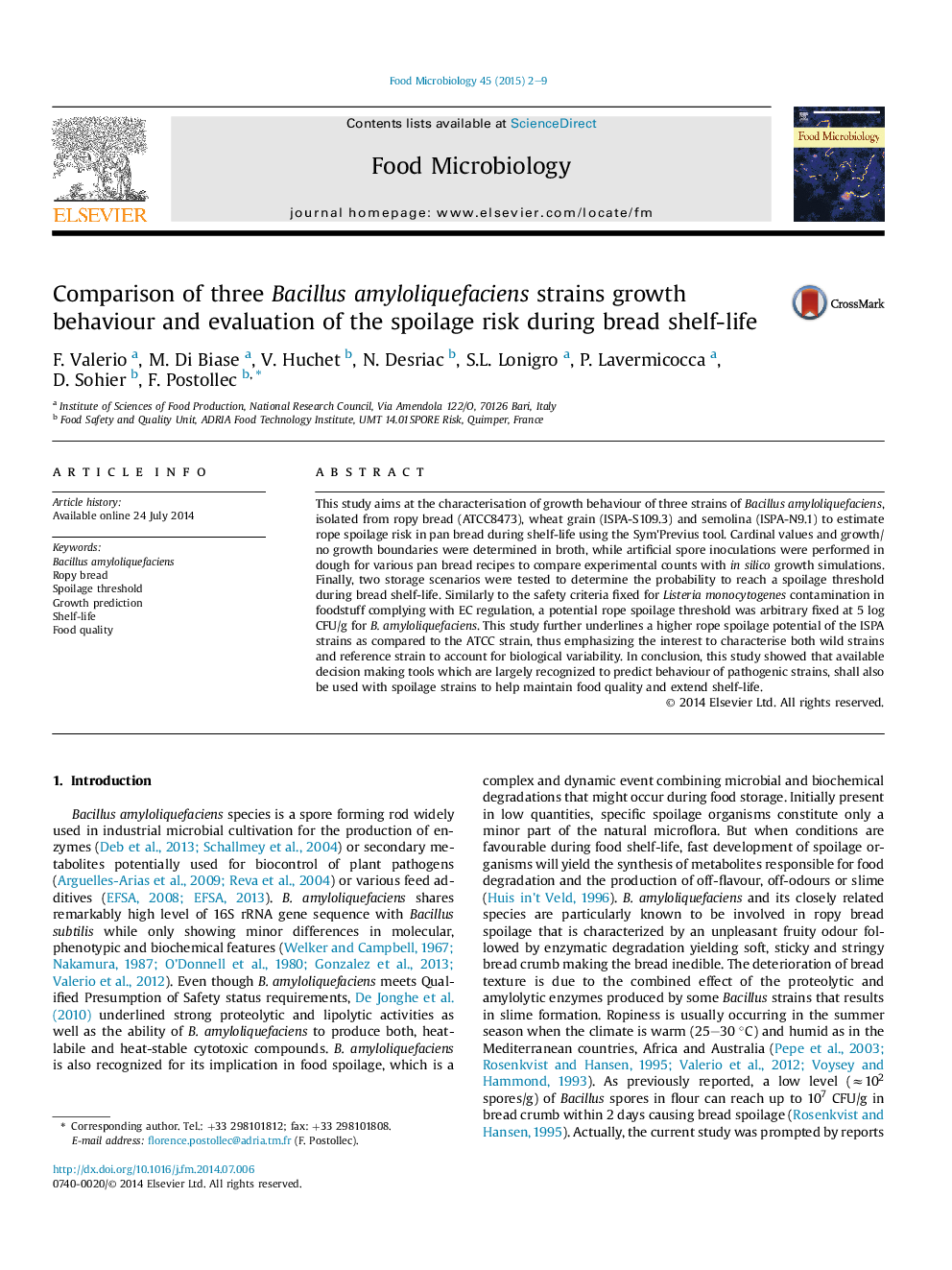| Article ID | Journal | Published Year | Pages | File Type |
|---|---|---|---|---|
| 4362759 | Food Microbiology | 2015 | 8 Pages |
•Characterisation of 3 strains of Bacillus amyloliquefaciens involved in bread rope spoilage.•Determination of environmental factors yielding bacterial growth in broth.•Comparison of growth simulations and experimental observations in bread.•Potential extension of bread shelf-life using an acidic bioingredient.
This study aims at the characterisation of growth behaviour of three strains of Bacillus amyloliquefaciens, isolated from ropy bread (ATCC8473), wheat grain (ISPA-S109.3) and semolina (ISPA-N9.1) to estimate rope spoilage risk in pan bread during shelf-life using the Sym'Previus tool. Cardinal values and growth/no growth boundaries were determined in broth, while artificial spore inoculations were performed in dough for various pan bread recipes to compare experimental counts with in silico growth simulations. Finally, two storage scenarios were tested to determine the probability to reach a spoilage threshold during bread shelf-life. Similarly to the safety criteria fixed for Listeria monocytogenes contamination in foodstuff complying with EC regulation, a potential rope spoilage threshold was arbitrary fixed at 5 log CFU/g for B. amyloliquefaciens. This study further underlines a higher rope spoilage potential of the ISPA strains as compared to the ATCC strain, thus emphasizing the interest to characterise both wild strains and reference strain to account for biological variability. In conclusion, this study showed that available decision making tools which are largely recognized to predict behaviour of pathogenic strains, shall also be used with spoilage strains to help maintain food quality and extend shelf-life.
